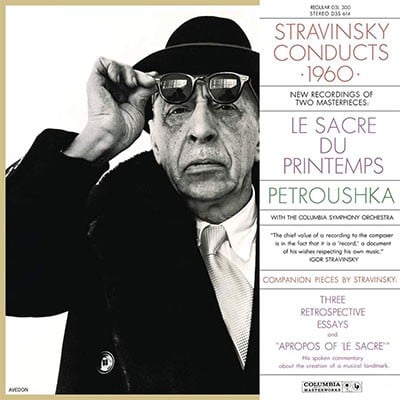The Rite of Spring
(Le Sacre du printemps) (1911-13, rev.1947)3(III=picc).picc.afl.4(IV=corA).corA.3(III=bcl).Dcl(=Ebcl).bcl.4(IV=dbn).dbn-8(VII,VIII=ttuba).4(IV=btpt).picctpt.3.2-timp(2).perc(4):crot/cyms/tam-t/tgl/guiro/BD/tamb-strings
Abbreviations (PDF)
Boosey & Hawkes
Stravinsky claimed that the vision of a young girl dancing herself to death first came to him in a dream. More likely is that the idea for the ballet originated with Nicolas Roerich, Russian painter, archaeologist and folklorist, who crafted the scenario with Stravinsky and who made the designs for the original production. It was probably Nijinsky’s radical, awkward choreography that prompted disquiet amongst the conservative quarters of the first-night audience in Paris in 1913, but the music too is some of Stravinsky’s most innovative. From its opening, high plaintive solo evoking the Slavic folk spirit, to its final, violent sacrificial dance, The Rite of Spring as ballet or concert piece still has an extraordinary elemental power. ‘There is music whenever there is rhythm, as there is life wherever a pulse beats’, Stravinsky inscribed in Russian onto a sketch page. The life force of The Rite of Spring is its rhythm. The Rite sits equally well in a programme of the Russian music that preceded it (Mussorgsky, Borodin) as it does with the music it inspired, from Varèse to Birtwistle, from Prokofieff to Reich.
Repertoire note by Jonathan Cross
Stravinsky's first inspiration – ultimately yielding the culminating Danse sacrale – was of "a solemn pagan rite: wise elders, seated in a circle, watching a young girl dance herself to death. They were sacrificing her to propitiate the god of spring." His collaborator Nicholas Roerich – an important painter who was also an archeologist well-versed in folklore – told Diaghilev: "My object is to present a number of scenes of earthly joy and celestial triumph as understood by the Slavs."
Repertoire note by Joseph Horowitz

Columbia Symphony Orchestra/Igor Stravinsky
Sony G010003468026K

